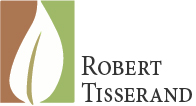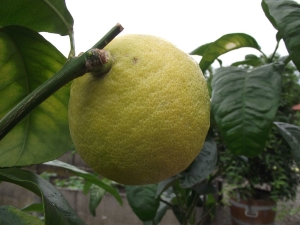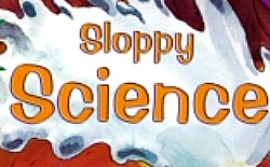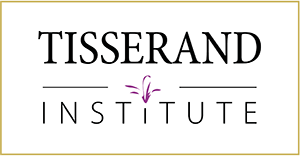I was recently contacted by an essential oil business (Plant Therapy) which had several customers ask about the safety of bergamot oil, as they had heard it could be lethal and cause convulsions in children. The sources of this warning appear to be MedicineNet.com and WebMD.com, as both websites have profiles on bergamot oil that include this:
“Do not use bergamot oil in children. There have been serious side effects, including convulsion and death, in children who have taken large amounts of bergamot oil.” MedicineNet.com WebMD.com These are no doubt widely-read websites. The WebMD information is quoted by Wikipedia. Both websites give the following source for all their information:
This copyrighted material is provided by Natural Medicines Comprehensive Database ConsumerVersion. Information from this source is evidence-based and objective, and without commercial influence. For professional medical information on natural medicines, see Natural Medicines Comprehensive Database Professional Version. © Therapeutic Research Faculty 2009.
The Therapeutic Research Faculty (TRF) is based in Stockton, California and sets a high standard for its own ethics.
After subscribing to the Natural Medicines Comprehensive Database ConsumerVersion (NMCDCV), I found the following: “Bergamot oil is POSSIBLY UNSAFE in children when taken by mouth in large amounts. There have been serious side effects, including convulsion and death, in children who have taken large amounts of bergamot oil.” However, still no information source is given. This is frustrating, especially for a website that claims it is wholly evidence-based. The TRF website has this: “All data and recommendations by the Center and any of its publications are based on scientific data. Therapeutic Research Center supports the key elements of evidence-based medicine.” An outline of evidence-based medicine can be found here. If the NMCDCV or the TRF have any evidence for their assertions, they are certainly keeping it well hidden.
No cases of child poisoning from bergamot oil are evident on any publicly accessible database. All the available information indicates that bergamot oil is non-toxic, and to the best of my knowledge, there are no reports of poisoning, or convulsions, or death, in either children or adults. Bergamot oil has GRAS (generally recognized as safe) status. There are no safety cautions for either children or systemic toxicity in either the Merck Index, or in Martindale, The Extra Pharmacopoeia, and these are standard reference works for such reports.
The acute toxicity of bergamot oil in rats was found to be over 10 g/kg (Opdyke 1973). This means that at 10 g/kg there were no rat deaths, so the lethal dose was something greater than this, and 10 g/kg is equivalent to 700 g (24.7 oz) in a 70 kg (154 lb) human. This is an extremely non-toxic substance! I am not aware of any evidence that bergamot oil is convulsant, either in lab animals or humans. In fact its main constituent, limonene, is anticonvulsant (Carvalho-Freitas & Costa 2002, Sayyah et al 2004).
The caution in the NMCDCV is not backed up by any scientific evidence, and makes no sense in light of everything that is known about bergamot oil. The website does invite “comments or suggestions on something that should be reviewed or included” but clicking here brings up a box that says: “Use this form to e-mail technical questions to the web site designers. For medical questions or any other questions about the use of any of the products listed on this web site, please contact your health care provider.” (Bold type not mine).
So is bergamot oil safe to use on children? We know that the oil is not acutely toxic, and all of the major constituents (limonene, linalyl acetate, linalool) and most of the minor constituents of the oil are known to be safe in terms of systemic toxicity (Tisserand & Young 2013). So a truly massive amount would have to be used in order to produce serious toxicity. A 3 year-old child weighing 14 kg (31 lb) would have to drink 140 g (4.9 oz) to attain the 10 g/kg level that was not quite lethal in rats.
No cases of bergamot oil poisoning have been reported, perhaps because few consumers possess large enough bottles of bergamot oil, and even if they did, that’s a lot of essential oil to drink! Bergamot oil is photosensitizing (see Safety note below), and this is a very important issue in terms of skin safety, but otherwise there is no particular reason for caution in children. There are a few moderately toxic essential oils, but bergamot oil is not one of them, in fact it is one of the least toxic of all essential oils. In my opinion, the claim that bergamot oil can cause convulsions and death in children is baseless and irresponsible.
Safety note
Bergamot oil is photosensitizing, meaning that if applied to the skin at certain concentrations, burning can occur if the skin is also exposed to ultraviolet light. To avoid this, bergamot should not be used at more that 0.4% dilution on the skin, or if it is, the person should not go outside during daylight for 12-18 hours (Tisserand & Young 2013). Alternatively, bergapten-free bergamot oil can be used, as this is not phototoxic. This warning applies to “leave-on” preparations such as oils, lotions and balms. There is no risk from “wash-off” products, such as soaps, shampoos and bubble baths.
References
Carvalho-Freitas, M.I., Costa, M., 2002. Anxiolytic and sedative effects of
extracts and essential oil from Citrus aurantium. Biological &
Pharmacological Bulletin 25, 1629–1633
Opdyke, D.L.J., 1973. Monographs on fragrance raw materials. Food &
Cosmetics Toxicology 11 (Suppl), p. 1035
Sayyah, M., Nadjafnia, L., Kamalinejad, M., 2004. Anticonvulsant activity
and chemical composition of Artemisia dracunculus L. essential oil. Journal of
Ethnopharmacology. 94, 283–287
Tisserand, R., Young, R., 2013. Essential Oil Safety, Churchill Livingstone, Edinburgh, p. 211




I suppose the reason for this is the common misunderstanding: quite often the name ‘bergamot’ refers to the beautiful plant monarda (M. didyma and M. fistulosa). I know two very different chemotypes of Monarda fistulosa essential oil, one is almost pure geraniol and the other smells like Origanum vulgare (both the fresh plant and the essential oil). As we all know carvacrol might be seriously dangerous for children if ingested. So in this specific case we can learn how important it is to know a little bit about botany and to use the scientific names of plants and their essential oils!
Well done Robert exposing this gross misinformation. I am afraid the site WebMD.com is typical of those many sites springing up with only one aim, to make money out of ad links.
I have also noticed an increasing amount of trash on sites supposedly run by Government agencies. The people who run these sites often have no knowledge of the subject matter they post and they cannot therefore be in any way considered “scientific”. This Bergamot issue is typical of idiot toxicologists who do not have any idea about the common toxic substances that everyone eats in their natural diets. Like you say the key is volume, not just a substance being present.
Thank you for your comment Eliane, but I don’t think there’s any doubt about which essential oil is being discussed. For example, the WebMD site gives a long list of synonyms that includes these: Bergamot Orange, Citrus bergamia, Citrus aurantium var. bergamia.
thanks robert, then it’s even more strange how they can release this warning, but as martin says, those toxicologists have no idea about the toxic stuff we all eat.
Please know I am not trying to dispute the possible benefits of bergamot oil, for most, I’m sure it is entirely safe. I, however, have some sort of neuromuscular reaction to bergamot oil, whether drinking one cup of Earl Grey Tea or exposure to it in perfumes, etc. Unfortunately the only information I’ve found regarding adverse events involving Citrus bergamia is photosensitivity and one case study in the UK of a man who drank 1 litre of Earl Grey per day which caused muscle spasms, etc. I have generalized violent repetitive muscle spasms and/or temporary paralysis from exposure to bergamot oil.
You commented that you were not aware of serious adverse reactions to bergamot oil, I felt it important to share this information with you. My case is not documented because I have not found a medical person who cares enough to investigate why bergamot oil has this effect on me.
I have a question about ingesting bergamot essential oil (therapeutic grade). I drink tea daily and add a drop of bergamot essential oil to the tea bag before steeping. I’ve noticed that I’ve developed a rash on my face, neck and chest which are exposed to the sun when I go walking daily. I’m wondering if the bergamot oil could be causing photosensitivity to the exposed areas of my body?
Thank you for all the information you share with us about essential oils!
Hi Miriam, if you are using a bergamot oil that has had the (phototoxic) bergapten removed, usually referred to as bergapten-free, that would be unlikely. But if it’s untouched bergamot oil, then it could well be causing your rash.
I am really loving reading through your blogs Mr.Tisserand. I’ve run across this information before and scratched my head at the conversation. Finding your blog has been extremely informative and education in arming me with better information. Theres so much to dig through online that its hard to know what is and isn’t hyperbolic